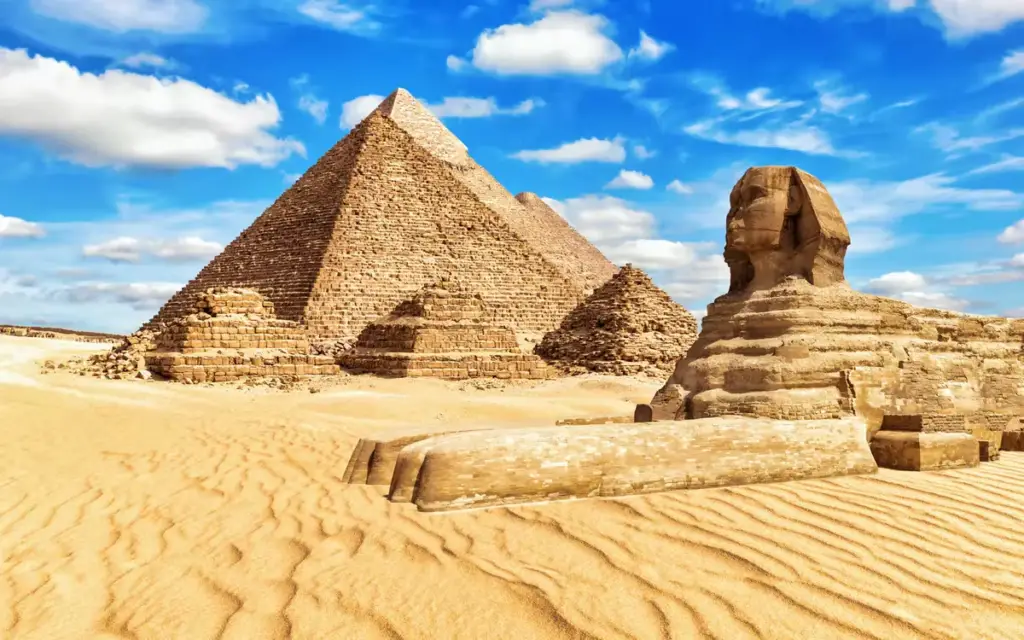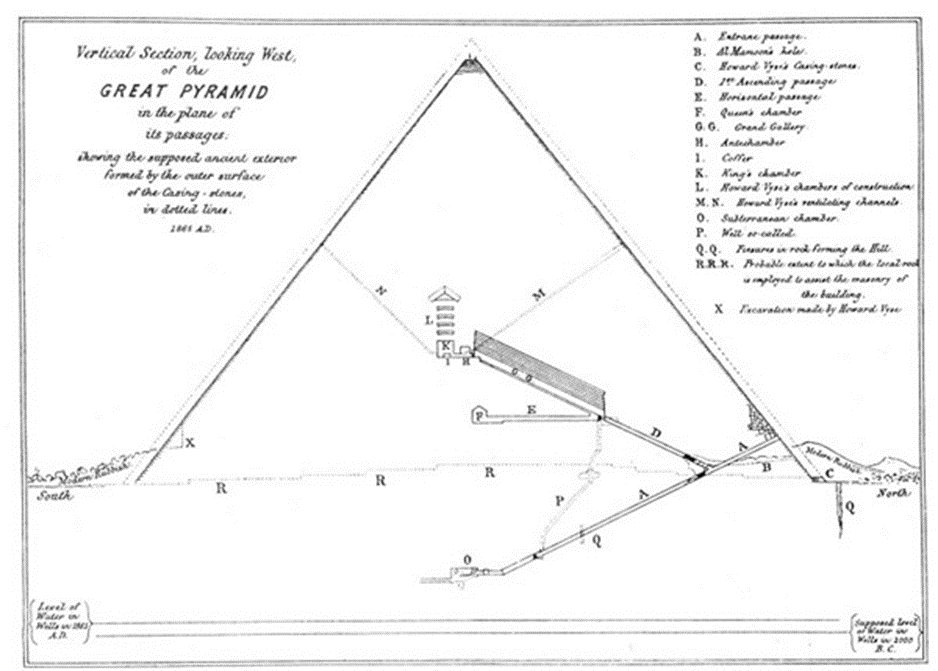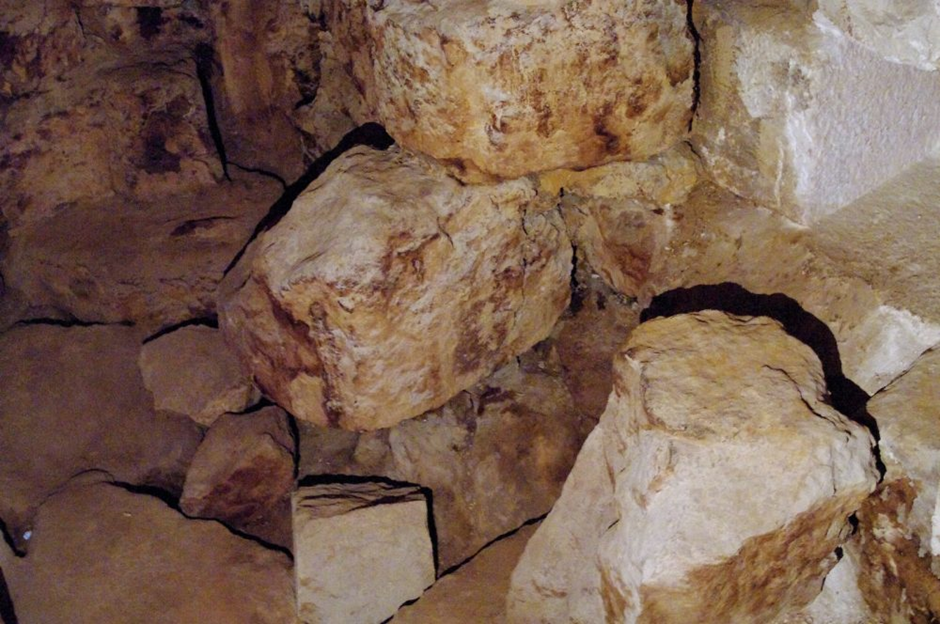There are some amazing remnants from ancient civilizations on Earth. These buildings appear to defy the technological advancements of their day either because they are too large, too heavy, or too intricate.
The pyramids’ origin and building methods are among history’s oldest mysteries. Through the ages, many knowledgeable people have questioned and asked how the pyramids were constructed.
Over a hundred Egyptian pyramids, including the Great Pyramids of Giza, are regarded as some of humanity’s finest feats of engineering and construction. Even though they have stood for almost 4,500 years, the purpose of these monuments remains a mystery. Ancient Egyptian texts provide some insight into the motivations behind the construction of such landmarks.
As far as we can tell, these massive buildings, built out of limestone or mudbrick, are one of the oldest habitations on Earth. You probably remember learning about the Egyptian pyramids sometime in elementary school.
These mammoths of structures are hard to escape as they’re famous for being majestic, for putting it lightly.
The tallest pyramid in Egypt, the Great Pyramid of Giza, once stood at 481 feet tall but has since eroded down to 451 feet because of vandalism.
To better imagine this, the average three-story building stands just 45 feet tall. So, if we’re doing the math correctly on this one — and we know we are — this pyramid would’ve stood at the height of a 32-story building. So, who’s responsible for creating these ridiculously tall and ever-elusive, mysterious pyramids? and how did they construct it?
The story of the Pyramids:
During the Fourth Dynasty, Kings Khufu, his son, and his grandson constructed the three gigantic pyramids at Giza, outside of Cairo. The Great Pyramid of Giza, the largest, was constructed by Khufu and is the only one of the ancient “Seven Wonders of the World” that is still standing today.
Upon completion, the Great Pyramid was about 50 stories tall and required the use of about 2.3 million blocks of stone. Its bottom is almost perfectly square and level, with sides that point in the directions of the four cardinal directions.
The outside casing of the Great Pyramid was originally made of smooth, light-colored limestone. While the finer limestone was worn and moved away in later years, remnants of the material may still be discovered in the cave’s interior passages.
It is estimated that the pyramid was built in 20 years by a workforce of over 20,000 people, including stonemasons, bakers, carpenters, and water carriers.

The leading assumption is that the Egyptians used a ring of sand, brick, and Earth that grew higher as the pyramid did, although the precise construction method is unknown.
As well as Khufu’s mummy, the pyramid’s inner chambers also housed afterlife necessities. Before modern archeologists began researching the pyramids in the 17th century, tomb robbers had long since stolen many of the valuable artifacts they contained.
The Great Sphinx was commissioned by King Khafre, the grandson of Khufu, and carved from a single piece of limestone that had been set aside from the quarry where the pyramids had been constructed.
The Sphinx is a statue honoring Khafre, with a lion’s body and a human face. There appear to be no hidden rooms inside the building.
Construction of Pyramids
Many historians and scientists have spent decades, if not centuries, trying to make sense of the methods employed to build the Egyptian pyramids. The construction of the Pyramids has been the subject of numerous contentious theories.
The prevailing explanation proposes that enormous stones were hewn from their quarry locations using copper chisels. These blocks were then hoisted and hauled into place. There is substantial disagreement, however, on the strategy for relocating and installing these stones.
One thing can be said with absolute certainty that the administration and organization of the employees were of the highest conceivable standard. This is something that can be said about the personnel.

Many people cannot fathom that individuals would voluntarily do the type of work required to build these gigantic monuments; thus, they continue to believe that the pyramids at Giza were constructed by slaves compelled to labor in the service of dictators.
Site of construction
Selecting a proper location was the initial stage in constructing a pyramid. Because ancient Egyptians considered the place where the sun went down to be the entrance to the afterlife, this location had to be on the Nile’s western bank.
All of the pyramids are perched atop a little slope. Only a small, encircling section was leveled and reduced to steps. Several openings are drilled into the ground along the periphery of the platform foundation. Mark Lehner, an experienced and profound archaeologist, suggests they supported alignment poles made of wood.
The pyramids were not built randomly, and their dimensions were quite precise, but no plans for their construction have ever been discovered.

Materials used in building pyramids
They were built to last—made primarily of stone, like limestone, which was used to build the core of the pyramid, while white limestone was used for its outer casing and the interior walls.
Pink granite was used on the inside walls, and basalt and alabaster were sometimes used for the floors.

Egypt has sometimes been referred to as the “state of the stone,” so there was never a shortage of it. The basalt they used sometimes came from the Fayum depression, one of the major oases of the Western Desert, while alabaster was from Luxor, a city on the eastern bank of the Nile.
Workforce
Denys Stocks, an ancient technology consultant, believed that 45 workers were needed to move a 35,900-lb — that’s 16.3 tons, by the way — block, and eight people to move a 6,060-lb block, as he noted in his 2003 book Experiments in Egyptian Archaeology: Stone working Technology in Ancient Egypt.

One single pyramid project could have taken between 20 to 30 years to finish building.
For the longest time, it was wondered that slaves who were at the behest of an evil pharaoh built the pyramids, and we can blame this fake news first and foremost on Herodotus, the Greek historian who wrote that The Great Pyramid was built by 100,000 slaves who ‘worked incessantly and were relieved every three months by a new gang.
The BBC further argues that there’s no way King Khufu – 4th Dynasty ruler of Egypt, responsible for the commissioning of the Great Pyramid of Giza, had a body of slaves this large to work for him, and there’s no way that all of them could work at the same time.
Pyramids Construction theories

The methods and techniques used to build the pyramid have been the subject of numerous competing theories. How the pyramid was planned remains a mystery.
According to John Romer, they followed the same procedure employed in previous and subsequent buildings by laying out plan sections on the ground at a 1:1 scale. As he puts it, “such a working diagram would also help to generate the architecture of the pyramid with precision unsurpassed by any other technique.”
There is “clear evidence” that the basalt blocks used to construct the pyramid temple were cut using a saw with a blade around 15 feet (4.6 m) in length. It is possible that this “super saw” had copper teeth and weighed as much as 140 kilograms, as suggested by Romer.
He hypothesizes that such a saw may have been fastened to the support of a wooden trestle and probably used in conjunction with vegetable oil, cutting sand, emery, or pounded quartz to cut the blocks. In order to operate the saw, it would have required the effort of at least a dozen men.
Consequently, some believe that the ancient people who constructed the Egyptian pyramids, the Nasca lines, and other similar structures followed an instruction manual left behind by extraterrestrials. It’s possible that the hands that constructed these sites were from another dimension entirely.

Or maybe they used The river Nile for construction, as the new evidence found. Let’s take a close to peeking at that.
Using a branch of the Nile to build pyramids
New evidence about the Nile bolsters a long-standing theory of how ancient Egyptians built the massive Giza pyramids thousands of years ago.
According to a study published in the Proceedings of the National Academy of Sciences, researchers determined that the pyramid builders likely took advantage of a “now-defunct” arm of the river to move construction materials and equipment.
Their research proves that the Giza Pyramid Complex could have been built about 4,500 years ago when water levels were higher.
According to The New York Times, study author and geographer Hader Sheesh remarked, “It was impossible to erect the pyramids here without this branch of the Nile .”
The massive quantities of limestone and granite needed to construct these monuments inspired scientists to speculate for a long time that the ancient Egyptians must have used redirected stretches of the Nile. (The Nile River and its tributaries are now located too far away from the pyramids to be of any practical use.)

According to this theory, also known as the “fluvial-port-complex” concept, ancient Egyptian engineers dug basins into the riverbed and carved a tiny canal across from the pyramid site to the Nile’s Khufu branch, all along the western margin of the Nile’s flood plain.
The researchers found that the annual flood waters acted like a hydraulic lift, allowing them to transport enormous blocks of stone to the construction site.
However, the researchers claim that prior to this, a clear picture of which landscapes were in question eluded investigators.
The research team employed a number of methods to simulate the ancient Nile floodplain, and their findings indicate that Egyptian engineers could have exploited the Nile’s now-dry Khufu branch to transport building materials to the Giza pyramid site.
How was research done
Scientists had already thought Egyptians may have brought the stones to the site by water.
Another discovery in 2013 showed the location of an ancient harbor near the Red Sea where the stones were loaded, suggesting the Egyptians knew how to move the blocks along rivers.

Other digs had suggested a harbor was built next to the pyramids and that builders had carved intricate waterways near the port.
To ascertain whether the Nile followed a different course at the time, experts dug holes in the desert surrounding the pyramids in search of ancient pollen from aquatic plants such as papyrus and cattails.
The Nile’s ancient Khufu branch was definitely high enough to allow ancient engineers to transport gigantic stone blocks and build the spectacular pyramids we recognize today.
Conclusion
After all this, you can now whip out your impressive pyramid-building knowledge at the next cocktail party when the topic comes up or simply slap your silly friend who thinks aliens built them. You make a choice.

In the end, the ancient Egyptian pyramids are a feat of architectural achievement that still baffles visitors today. Still, as you read, we discussed their construction from the interesting involvement of the Nile in it.
But there are still more mysteries buried in the drifting sand. We hope that research on entering into newly discovered tombs and shafts will help reveal more of the magic of Egypt to the world.
Let us end with a fun fact; Pyramids used to shine like diamonds.
At the time of its construction, the Great Pyramid of Giza was encased in a polished limestone casing. Some believed that when the Sun struck the shell, it would have glistened like diamonds and been seen for miles. The majority of the blocks were removed and used in various construction projects over the millennia.







2 300 000 blocks. 2 300 000 minutes = 50 years.
Two blocks in a minute? Even at night, even on Sunday or on the pharao’s birthday?